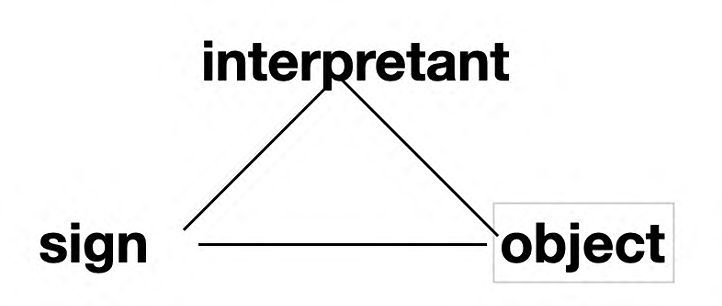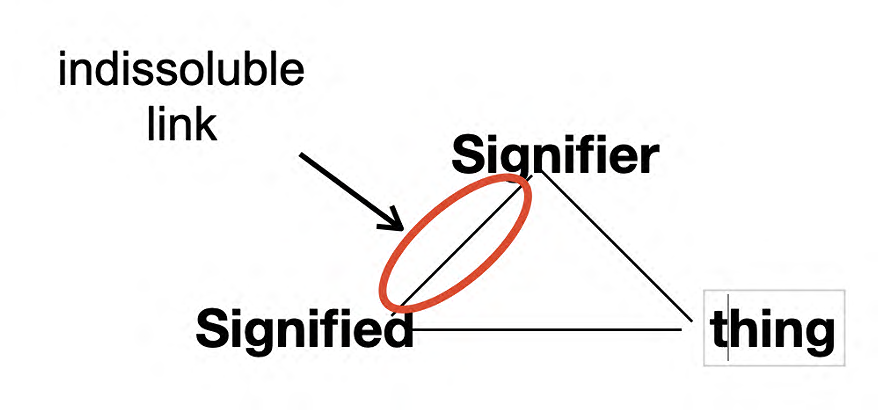-
- Centre de recherches en histoire et épistémologie comparée de la linguistique d'Europe centrale et orientale (CRECLECO) / Université de Lausanne // Научно-исследовательский центр по истории и сравнительной эпистемологии языкознания центральной и восточной Европы
-- Patrick SERIOT (University of Lausanne) : « A central topic in Russian semiotics: The third element between world and thought (A. Potebnja’s inner form of the word)», Epistemologica et historiographica linguistica Lausannensia, № 4, 2022, 293-298
[293]Abstract:
All the semiotic interpretations of the problem of the sign can be reduced to two solutions: a couple or a triad. The history of semiotics in Russia is a breathtaking example of this twofold approach.
Keywords: philosophy of language, Russian semiotics, René Descartes, Charles Sanders Peirce, Aleksandr Potebnja[294]
Long live the Tartu semioticians, with Kalevi Kull as their inspirator, for all they brought to the intellectual world. Here I propose a small contribution to the history of semiotics in Russia.1. COUPLE OR TRIAD?
The philosophy of language has dealt with three entities since ancient Greece: thought, the world, and language, the latter for a long time being only regarded as the dressing of thought. Gradually, the thought / world couple was transformed into a triad, where a third term came to be inserted: language as such. This triad can take various forms: thought / language / world, or concept / word / thing. It takes a canonical form in Peirce1[1]

Figure 1
The dual conception has a long and blurred history due to the fact that duality sometimes concerns the language / thought relationship and sometimes the language / world, or word / thing, or form / content, from Saint Augustine (for whom the definition of the sign is aliquid stat pro aliquo: “somethings stands for something else”) to the theory of reflection in Lenin. It remains to identify, in the dual conception, what comes first: language or thought, which is the whole issue of the romantic reversal against Cartesianism. Descartes had posited the existence of extralinguistic thought and considered natural language as “one of the causes of our errors”, reproaching languages with having “confused meanings”. The universe being divided into “things” and “ideas”, language became a clutter, a useless and superfluous intermediary.
The sign/thing or sign/idea dual conception asserted that the content has an existence independent of the form. Thus, in the Port-Royal Logic, the sign is a redoubling, a substitute which “stands for” something else that pre-exists: “The sign contains two ideas, one of the thing which represents, the other of the thing represented, and its nature consists in exciting the second by means of the first”[2].
Figure 2
[295]
For Descartes language is derived from the faculty of thought: we are speaking beings only because we are thinking beings. The thinking subject conceives his objects directly, without resorting to words; language plays no role in the elaboration of thought; its only role is communicating an idea if it is formed clearly in the mind. Language is a tool that man uses: it is part of our panoply and not of our very being. This principle supposes a precise motivation to speak: we speak to communicate ideas, because we have something to say. Communication is a rational and utilitarian activity.2. SOMETHING WAS MISSING
It is against this mechanistic dualism that little by little a third element slips in: the dimension of language as such, which blurs the reassuring but difficult to maintain order of both the theory of thought as a reflection of the world and of that of language as dressing, or serving thought. To the dual, instrumentalist conception of language as a sign, which implies that the object of the semiotic relation exists independently of its sign, Humboldt opposes a triadic conception: the third element that he introduces between words and things is language (in the sense of langue, not of langage), and, more exactly, its internal form. Language, for him, is neither a sign of the world nor of thought. What was only a means becomes a necessary intermediary. J. Trabant[3] spoke of an “antisemiotic” in Humboldt.
Against “the idea that the different languages only designate the same mass of things and concepts existing independently of them with different words and juxtapose the latter according to other laws which, apart from their influence on understanding, have no other importance”, Humboldt exposes his fundamental position: “The real importance of the study of languages lies in the participation of language in the formation of representations”[4].
The word “is in no way a member of the class of signs, because [in the sign] what is designated exists independently of its sign, whereas [in language] the concept finds its completion only in the word, and the two cannot be separated from each other”[5] “the sum of all words, language, is a world situated in the middle, between that which appears outside of us and that which acts within us”[6].
This triad places language between thought and the “world”, constituting that Zwischenwelt [‘intermediate world’ (or ‘other world’?)] which forms the basis of the entire Humboldtian line in the philosophy of language. Languages are thus historical ways, each time different, of appropriating the world intellectually.
[296]
Note that thought has changed sides: it no longer precedes the sign that denotes it, as in reasoned grammars of the 18th century, since it isnow “indissolubly linked” to the word:
Figure 3
3. HUMBOLDT’S SEMIOTICS IN RUSSIA
The introducer of Humboldt’s philosophy of language in Russia was the great Russian-Ukrainian thinker A. Potebnja (1835-1891). What is thinking for Potebnja? In the Port-Royal Grammar men conceive (by the name) in order to then be able to judge (by the proposition) and reason (by the discourse). In Potebnja’s Thought and Language[7], on the contrary, they neither judge nor reason properly speaking, they do not hold a discourse, they only represent things, animated beings or events to themselves by taking them by a small end: the feature selected by the lexicon of their language, based on a process of apperception, a mediator between what is already known and what is to be known, the participation of the “mass of representations” already there in the configuration of new thoughts. But Potebnja makes no distinction between form of thought and content of thought. Thought seems to be reduced to a lexicon tinged with metaphors. The problem of the truth of a proposition is not addressed.
In Potebnja, in fact, the third element is a double object: a representation (psychological term, the way in which one mentally represents an object), but at the same time a lexical unit (linguistic term), a double nature where the two entities merge into one.
Studying the history of Russian semiotics is a way of bringing to light some poorly known specificities of Russian thought through its tight links with German romanticism. Thanks to the Tartu semioticians for their work on the edge of East and West![297]
BIBLIOGRAPHY
— ARNAULT A., NICOLE P., 1662: La logique ou l’art de penser. Paris, Guillaume Deprez (English transl.: Logic, or The Art of Thinking, 1st ed. London, H. Sawbridge, 1685; last ed. Cambridge, Cambridge University Press, 1996).
— von HUMBOLDT W., 1967: Gesammelte Schriften. Berlin, De Gruyter.
— «PEIRCE’S THEORY OF SIGNS», in Stanford Encyclopedia of Philosophy
(https://plato.stanford.edu/entries/peirce-semiotics/; accessed on 30.04.2022).
— TRABANT J., 1992: Humboldt ou le sens du langage. Liège, Mardaga.
— ПОТЕБНЯ А., 1862: “Mысль и язык”, in Журнал Министерства народного просвещения, 1862, CXIII (1): 1-54; (2): 55-94; (3): 95- 118; (4): 1-33; (5): 89-131. [Thought and language]
[1] See Peirce n.d.
[2] See Arnault, Nicole 1662, I, IV.
[3] Trabant 1992: 67.
[4] Von Humboldt 1967, VI: 119.
[5] Ibid.: 428.
[6] Ibid., III: 167.
[7] Потебня 1862.
- Centre de recherches en histoire et épistémologie comparée de la linguistique d'Europe centrale et orientale (CRECLECO) / Université de Lausanne // Научно-исследовательский центр по истории и сравнительной эпистемологии языкознания центральной и восточной Европы